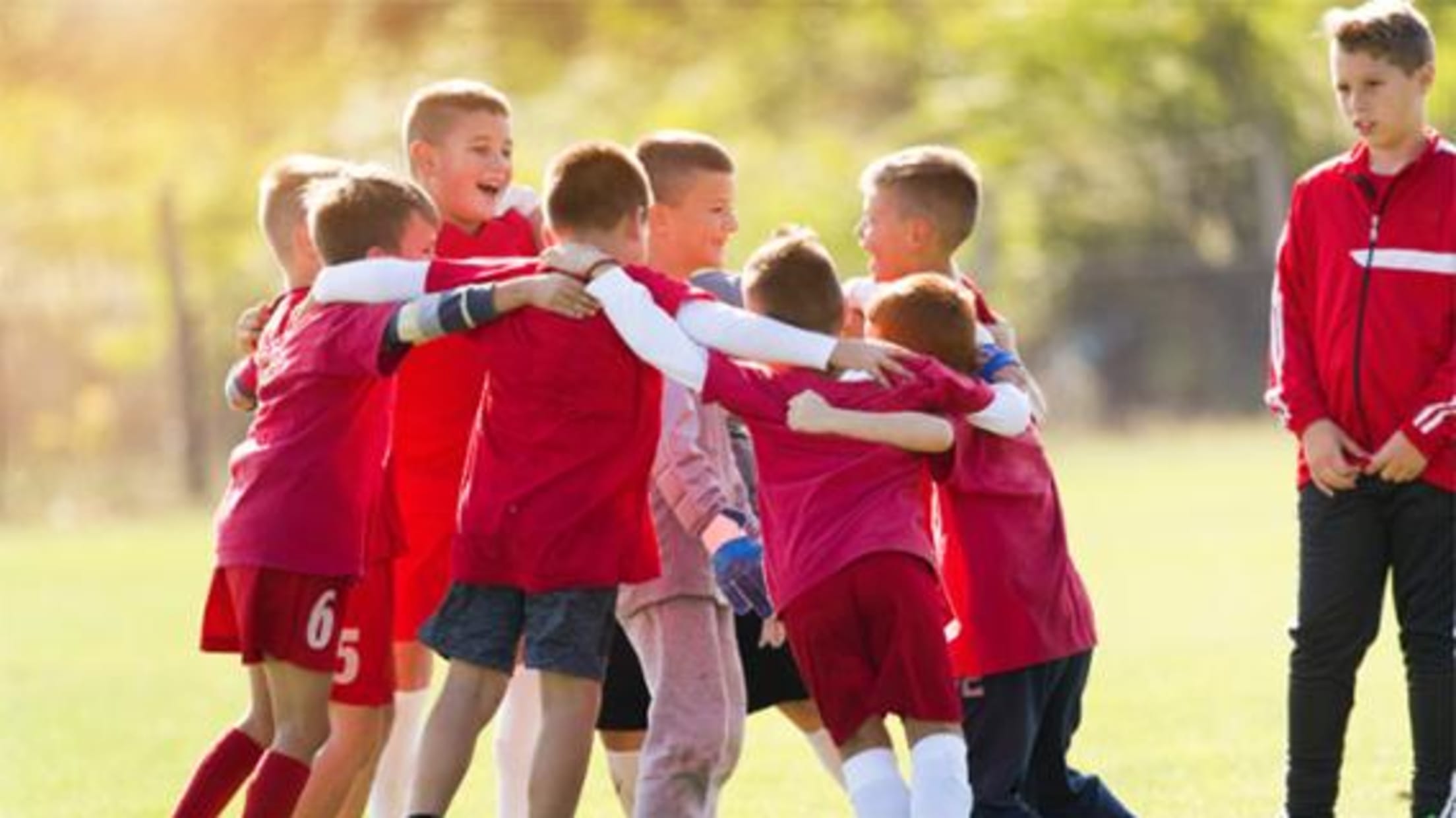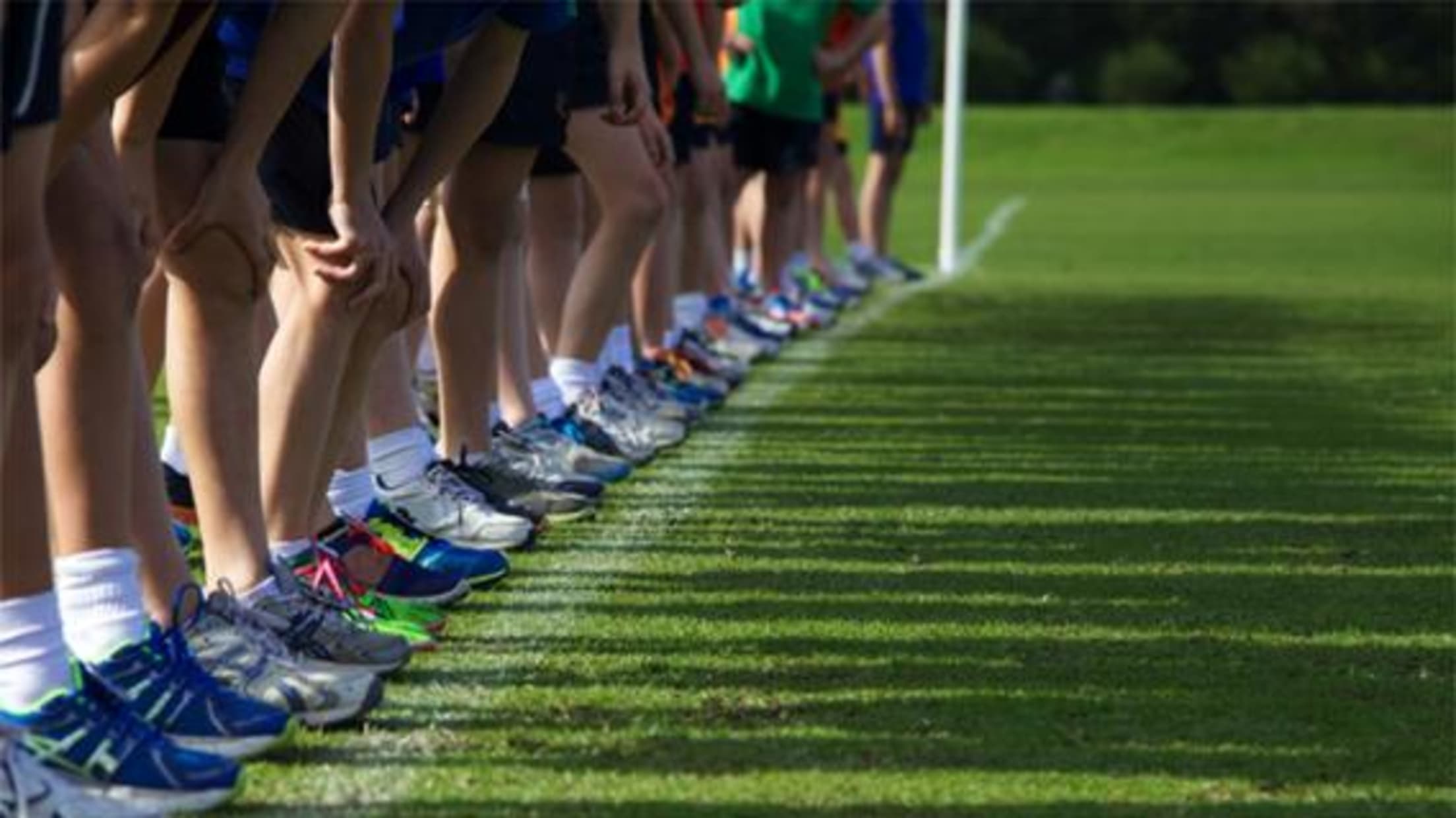TrueSport: May 2019

How to help athletes navigate between sports seasons, how youth sports can lead to a better job later in life and alternatives to exercise as punishment in youth sports this month from TrueSport.
Trending
How to help athletes navigate between sport seasons
Serious student-athletes are being pulled in so many directions now: from academic responsibilities, to school and club sports with seasons that often overlap. Everyone wants those teams to do well, but this can often come at great cost to the student-athletes, who may encounter burnout, overtraining and mental stress from trying to juggle multiple teams at the same time.
As a coach who focuses on collegiate sports, Celia Slater, former college basketball coach and founder of True North Sports, often sees athletes coming to college burned out from trying to balance club and school sports. Here she explains how coaches can work together to create stronger, more resilient athletes by sharing the training load, not doubling (or tripling) it.
Don't force them to choose
"We shouldn't put student-athletes in a position where they have to choose," says Slater. "We should be creating systems that support the student-athlete and what he or she wants to achieve in sport."
It is more work -- you're going to have to individualize plans, communicate more with other coaches and talk with parents and athletes more. It might mean relaxing the rules on the number of practices required or working with another coach to create a cohesive strength-training and interval routine. But ultimately, if the goal is to create great athletes versus simply stake your claim on them, extra time and considerations need to be given so they know they can play for both teams.
Create lines of communication between coaches, parents and the athlete
Right now, you may be relying on the athlete to tell you what their other practice and competition schedule looks like, but that doesn't always work. High-achieving athletes will feel the need to try to satisfy both coaches, and as a result, may end up doubling up on practices, or not telling you that they already did a lifting session or interval workout that day for their other coach.
"Talk to the other coach and come up with a plan that's healthiest for the individual athlete, which also means including the athlete and their parents in creating a schedule that works for everyone," says Slater. Make sure it's clear that communication is necessary and expected. An athlete should feel comfortable talking to you anytime, not just at the start of the season.
Think critically about your values overall
"Are the policies on your team in the best interest of the team or of each athlete?" asks Slater. You may have unintentionally created policies that force athletes into unhealthy situations.
"Athletes are getting pulled in two directions, and eventually, they're torn in half and will quit, or will pick one or the other. Look closely at your policy and culture and see how it aligns with the values of creating healthy, happy athletes," she adds. Again, that might mean that your current hard line policy of 'no missed practices the week before key games' may need to be relaxed in certain circumstances.
Focus on teaching self-leadership
Ultimately, most student-athletes won't go on to become professional players, but no matter what skill level they have at sport, you can support their ability to succeed in life.
"Student-athletes get sport skills at an alarming rate but often miss skills like self-awareness that they need to get through college and life," Slater explains.
"You have to teach athletes to lead themselves for success later in life. We underestimate how difficult that transition can be, and don't teach it." This might mean letting a student athlete create her own schedule of practice, it might mean assigning more leadership rolls, or asking for a certain type of accountability. Remember that the goal of sport at a young age is about creating good people, not just good athletes.
Keep a close watch for signs of burnout
"Many athletes pulled in different directions by club and school teams end up quitting by college," says Slater. "I think very few of these kids who go through club and school sports get to college and don't want to play anymore, they just want to finally relax."
This is avoidable: Be on the lookout for signs of burnout.
Slater adds, "Generally speaking, coaches need to be able to see if an athlete is having a high anxiety level, is depressed, isn't enjoying the sport anymore." Those signs may indicate that the athlete needs to take a break from one team, or to cut down on practice or play time.
-------
Whether an athlete is on a school team, a club team or both, it's a coach's job to help create a healthy environment for all athletes. To develop happier and healthier student-athletes, it's important to let them play different sports and learn how to balance their interests in a safe, effective way.
Parents
How youth sports can lead to a better job later in life
As parents, we all like to think we're steering our children toward activities and opportunities that will help them lead happy, productive and fulfilling lives. We encourage them to work hard, have integrity, take risks, show gratitude, be respectful, etc. But at some point, deep down, every parent realizes there are no guarantees. There's no formula that ensures success, but there are definitely behaviors, activities and opportunities that increase the chances your child will become a successful, ethical and happy adult. According to recent research, participation in youth sports is one of them.
A 2014 study by Kniffin, Wansink and Shimizu examined how participation in high school sports correlated with a person's behaviors and accomplishments later in life. Here are some of their findings:

Hiring managers preferentially hire student-athletes
Parents often look to youth sports to help their children develop leadership skills, self-confidence and self-respect. According to the research from Kniffin and his colleagues, managers looking to hire people for entry-level jobs have the expectation former student-athletes possess those skills and traits, which gives them a competitive advantage. They even looked at whether this advantage was specifically associated with sports, or whether participation in any organized activity provided the same advantage. Compared to former band and yearbook members, former student-athletes were perceived by managers to have greater leadership skills, self-confidence and self-respect.
Former student-athletes advance faster
Certain lessons learned through sports help young workers advance in their careers. Youth sports expose kids to organizational leaders (coaches) early on, which research has shown to be an important component of learning leadership skills. Team sports also "reward group-level achievements and appear to facilitate the enforcement of group-serving behavior." In other words, former student-athletes are better team players in a career setting, and grow to become leaders who strive for the success of the team.
Former student-athletes have higher wages at 30 years old
Supporting prior research, a 2010 study by Betsey Stevenson showed participation in high school sports had a positive effect on the amount of education people attained, the likelihood of being employed as an adult and the wages they earned. Stevenson's work focused on the effect of Title IX on the success of women in the workforce, and two results of particular note were that: 1) Higher wages only correlated with participation in high school sports, and not any other extracurricular activities; 2) Title IX led to a substantial increase in the percentage of women who subsequently pursued traditionally male-dominated, higher-wage careers.
Former student-athletes are more likely to give back
Another component of the study by Knifflin and his colleagues examined philanthropic behaviors of former student athletes 60 years after high school. They found that older men who participated in volunteer work or donated money to charitable causes were more likely to have participated in high school sports, and particularly, exhibited leadership traits in high school sports.
Overall, former student athletes earned more money, advanced to more senior career positions, and were more likely than non-athletes to volunteer and donate money as older adults.
It is important to note, the researchers referenced in this article acknowledged they could only show correlation, and not causation. They couldn't answer whether the people who earned more, advanced further, and were more philanthropic achieved those outcomes because they participated in sport or if the traits that helped them succeed later in life also drew them to participate in sport in the first place.
Either way, participating in high school sports is a winning proposition!
References:
Kniffin, Kevin M., et al. "Sports at Work." Journal of Leadership & Organizational Studies, vol. 22, no. 2, 2014, pp. 217-230., doi:10.1177/1548051814538099.
Stevenson, Betsey. "Beyond the Classroom: Using Title IX to Measure the Return to High School Sports." 2010, doi:10.3386/w15728.
Coaches
Take a lap: Alternatives to exercise as punishment in youth sports
"Drop and give me 20."
"Take a lap."
"The losers of this drill have to do five extra sprints at the end of practice."
For generations, using exercise as punishment in youth sports was the norm. The practice has even been romanticized, like in the movie "Miracle," where hockey players are forced to skate seemingly endless 'suicide' drills after a bad loss.
But in a time when people already have enough trouble getting exercise, it's a disservice to use exercise as punishment, which paints it as something negative instead of something that should be enjoyed.

In fact, using exercise as a disciplinary tool is considered corporal punishment and thereby illegal in more than half of U.S. states, several of which also have laws against withholding exercise (e.g., keeping kids from recess). The Society of Health and Physical Educators (SHAPE) has also made an official statement shunning the practice.
At the end of the day, youth athletes are still kids. So, if taking more laps at the end of practice shouldn't be used as punishment, what can be done to hold athletes accountable?
Alternative 1: Verbal warning
Even if an athlete has a penchant for acting independently from the team, sometimes being called out in front of peers can be enough to create a positive behavior change.
Be wary, however, that drawing attention to misbehavior can feel like a reward to some kids, so consider carefully whether a one-on-one approach would be more effective than addressing them in front of the entire group.
Alternative 2: Academic and non-traditional punishments
If coaching a school-sponsored team, research if school-related punishments, such as before or after school detention, can be handed out to youth athletes that violate their team or sport rules. In addition to being an effective punishment any student-athlete would want to avoid, it might further underscore the importance of acting in a mature manner in organized settings.
Instead of exercise as punishment, the United Kingdom's education secretary once explained the value of alternate and equally undesirable punishments, such as "writing lines, picking up litter in playgrounds, weeding, tidying classrooms and removing graffiti," that would not blacken an athlete's view of exercise.
For athletes on non-school teams, this idea could transposed into cleaning up the playing field after practice, or writing an essay about their role on the team or why it's important to keep a cool head.
Alternative 3: Brief removal
If an athlete's transgression resulted from frustrations about a call or heated moment during a game, it's the coach's responsibility to step in and pull that player from the game for as long as it takes. Depending on their role on the team, the punishment might come with the added of weight of having to watch their teammates struggle without them.
Not allowing them to re-enter until they have regained their composure also communicates that their behavior has no place in sports, no matter how frustrating the context. Explain that it's the coach's job to discuss issues with the referee or to point out dangerous play, not theirs.
Alternative 4: League action
If a misbehaving player's infraction is something that is endangering other players, it may be time to have the league or conference get involved. Depending on the seriousness of the offense, the league might barr the player from playing for a game or more.
Often just making athletes aware that removal is a possibility, whether at the beginning of the season or when they start to act out, is enough to elicit a positive behavior change.
Alternative 5: Establish expectations
The need for any disciplinary action can possibly be avoided before the season begins by firmly establishing behavioral expectations, such as always shaking opponent's hands after the game, participating to the best of one's abilities in drills, and never shouting at a ref. It's also important to clearly define the punishment for such behavior.
Setting goals that all athletes and the team feel strongly about can also reinforce positive behavior.
In the end, it's about creating an environment that athletes want to support and finding ways to create behavior change in a positive way.
About TrueSport
TrueSport®, a movement powered by the experience and values of the U.S. Anti-Doping Agency, champions the positive values and life lessons learned through youth sport. TrueSport inspires athletes, coaches, parents and administrators to change the culture of youth sport through active engagement and thoughtful curriculum based on cornerstone lessons of sportsmanship, character-building and clean and healthy performance, while also creating leaders across communities through sport.
For more expert-driven articles and materials, visit TrueSport's comprehensive LEARN resource.
This content was reproduced in partnership with TrueSport. Any content copied or reproduced without TrueSport and the U.S. Anti-Doping Agency's express written permission would be in violation of our copyright, and subject to legal recourse. To learn more or request permission to reproduce content, click here.
